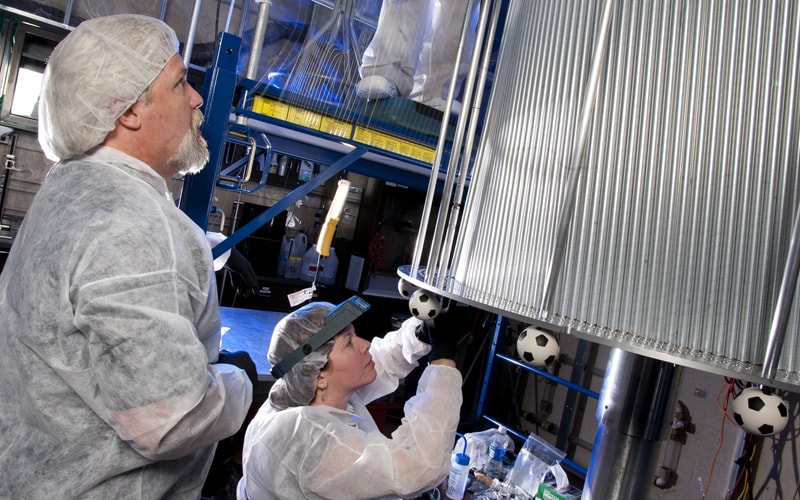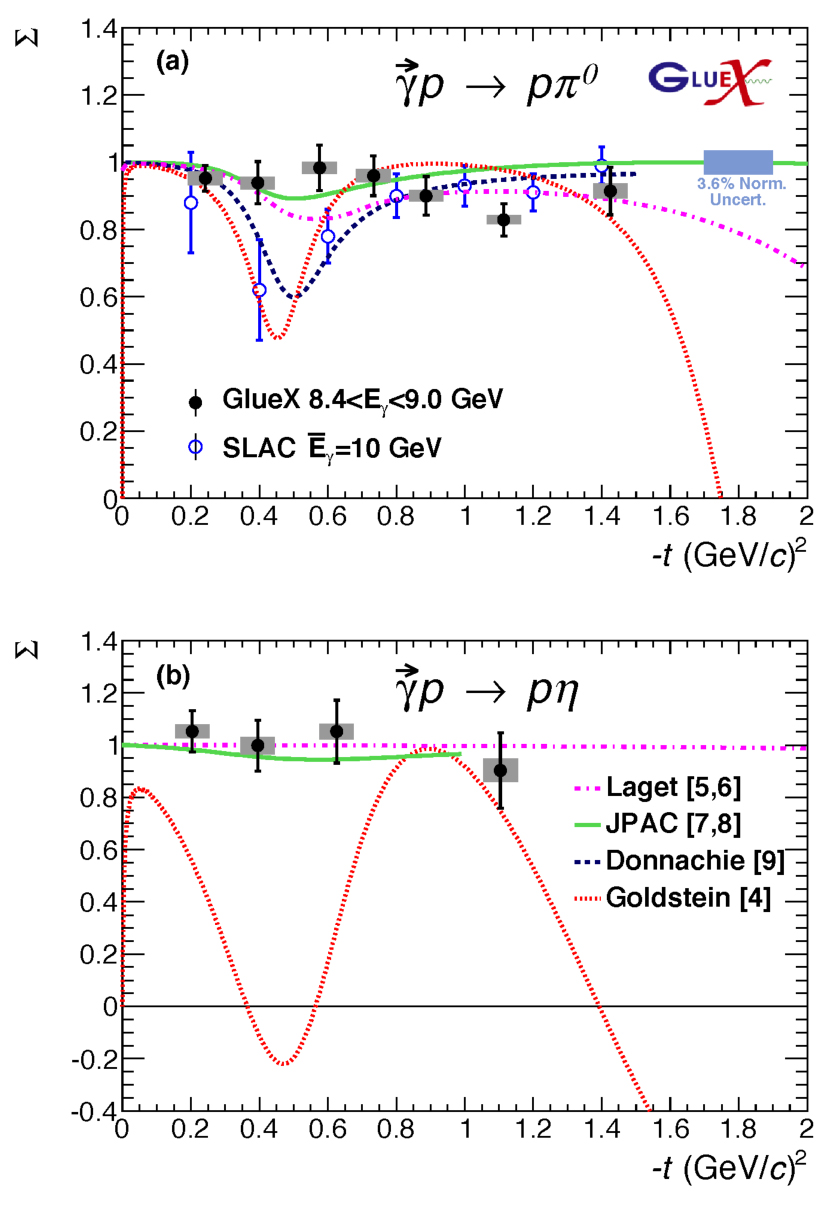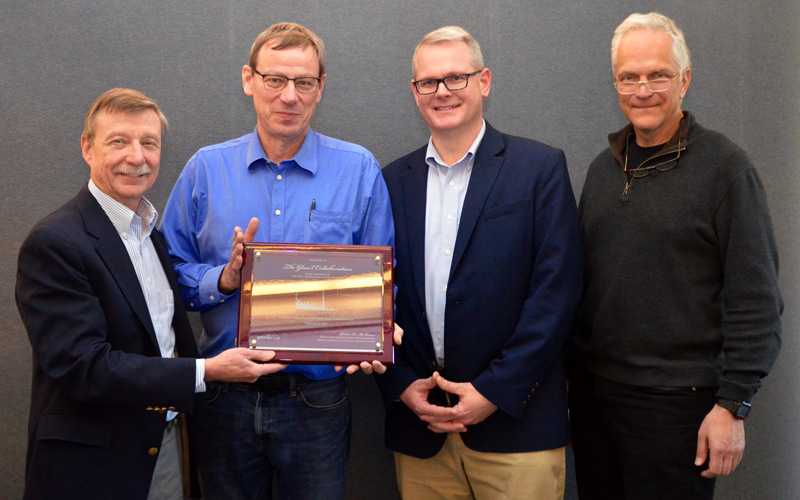First Scientific Results from Long-Awaited GlueX Experiment

Glue-X Experiment at JLab
The Jefferson Lab (J-Lab) particle accelerator has produced charm quarks. The particles were first observed by the Glue-X collaboration, marking a milestone for the accelerator. Scientists now can begin research that seeks to better understand these particles and the role they play in shaping the universe.
J-Lab commemorated this momentous observation by presenting an award to the Glue-X Collaboration on Feb. 16. Carnegie Mellon Physics Professor and Glue-X spokesperson Curtis Meyer accepted the award on behalf of the 125 scientists in the research group.
Quarks are elementary particles that are fundamental parts of all matter. The protons and neutrons found in the nucleus of all atoms are made up of up and down quarks, the lightest two quarks found in nature. There are four other heavier quarks, – charm, strange, top, and bottom quarks – that can only be produced by large particle accelerators. The existence of these heavier quarks is a critical to many properties of the universe.
The accelerator at J-Lab recently underwent an upgrade, doubling its energy to 12 GeV. This increase made it possible for charm quarks to be produced at J-Lab, enabling a physics program that will study charm quarks produced in near-threshold reactions where the available energy is just sufficient to create them.

